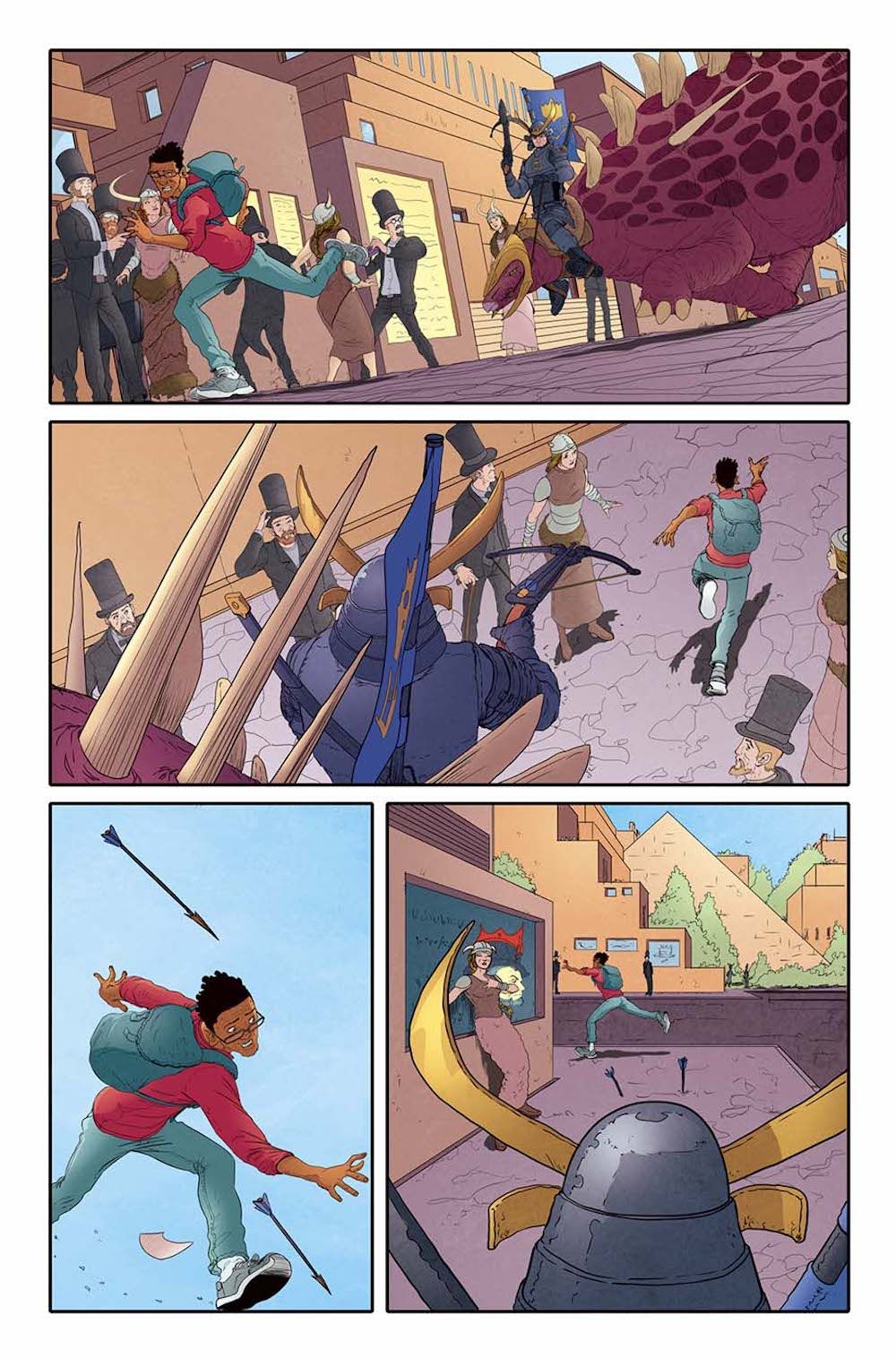The Man Who F#%&ed Up Time #1
- WRITER
- John Layman
- Artist
- Karl Mostert
- Letterer
- John Layman
- Cover Artist
- Karl Mostert, Larry Stroman, Dee Cunniffe
- Publisher
- AfterShock Comics
- Release Date
- 2020-02-05
- Colorist
- Dee Cunniffe
Eisner Award-winning comic book creator John Layman makes his AfterShock Comics debut in 2020 with The Man Who F#%&ed Up Time, joined by artist Karl Mostert. True to its title, the new series certainly brings the time travel high jinks, yet subverts the common tropes associated with the sci-fi sub-genre. A lot of this comes with Layman's fan-favorite approach to the medium, with Mostert bringing the escalating, wacky proceedings to visual life. It's a reminder of what the genre can be.
The new AfterShock series follows a young man named Sean Bennett who works as an assistant at a cutting-edge laboratory. Put upon by the scientists, including his ex-girlfriend, Sean decides to improve his lot in life by changing his own history. However, the familiar premise is quickly turned on its head when Sean experiences the cataclysmic consequences of time travel firsthand after he's plunged into a radically different reality due to his tampering with the space-time continuum.
Layman, who also serves as the series' letterer, has always pushed beyond the conventional expectations and commonly accepted boundaries of the comic book medium. This is apparent in his creator-owned titles like Chew and Outer Darkness and even in his licensed work, like Detective Comics, which explores more surreal adventures for the Dark Knight that defy the usual possibilities of what a Batman comic adventure can be. In The Man Who F#%&ed Up Time, Layman subverts expectation associated with time travel stories to completely wacky, irreverent effect -- this is completely unlike, say, Back to the Future or Chrononauts.
Layman provides his hook right from the series' opening pages, with a patently bizarre conglomeration of historical elements as Sean finds himself hunted in a new world he inadvertently created. From there, Layman pulls the curtain back to show the events leading up to the action -- an approach he's employed in previous tales. That said, in this series, Layman leans into screwball comedy perhaps more than any of his prior work. Even Chew brought heartbreaking tragedy and drama to the proceedings. However, this series focuses more on wackiness to spin its epic butterfly effects.
Layman is joined by relative newcomer Karl Mostert, teamed with colorist Dee Cunniffe. Mostert's work here is reminiscent of Frank Quitely, but he still brings his own visual voice to the proceedings. The art team excels the most when they lean into the outlandish elements of the story, crafting an imaginative, immersive world by blending iconic elements across history into a strange, quixotic smorgasbord. This isn't to say the quieter moments are ineffective but, like the script, when the art goes full tilt on the bizarre possibilities of the series' premise, the visible fun the creative team is having pops off the page and spreads to the reader.
As wacky as Chew could get, Layman hasn't really gone full screwball comedy before -- even his work co-writing Stephen Colbert's Tek Jansen felt more restrained at times. With The Man Who F#%&ed Up Time, Layman is finally able to explore this genre in full, using the familiar premise of a time-travel story as an excuse to create a wacky sci-fi comedy adventure. For readers looking for a more traditional time-travel story, this isn't it. Instead, the creative team takes full advantage of the medium and genre, limiting themselves only to their imaginations as they take a well-worn premise and completely turn it on its head.
The Man Who F#%&ed Up Time #1 is available on February 5.


